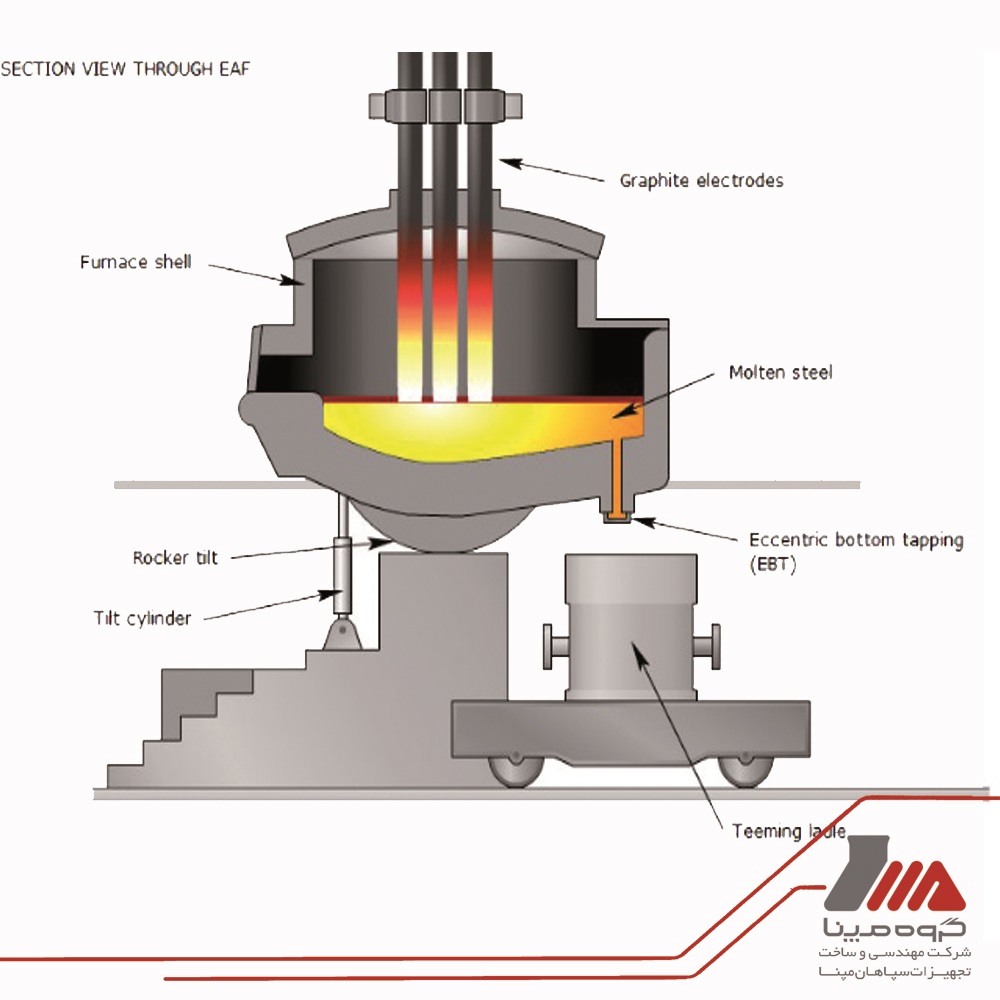Continuous Electric Arc Furnace
Overview:
Structural, high alloy, high carbon, low carbon, and high strength steel can be produced in electric arc furnaces.
Unline induction furnaces, electric arc furnaces are capable of consuming a high percentage of sponge iron. However, to create the primary melt bath, a certain percentage of iron scrap (some 2% of the total metal charge) is added to the electric arc furnaces.
After creating the melt bath, the sponge iron and lime are charged simultaneously with the electric arc and oxygen, natural gas, and coke being also blown by jet burners.
With the addition of oxygen, coke, and lime to the molten material, a foamy slag is created. This slag covers the arc and maintains its stability, increases energy efficiency, prevents severe corrosion of refractory materials, and helps refining processes in the arc especially dephosphorylation in the furnace.
The injection of oxygen and carbon with natural gas by jet burners is an exothermic process and reduces energy consumption per ton.
The amount of electrical energy consumption in phase one of arc furnace unit with MVA170 transformer and a maximum power of 245MW is about 650 KWH/TON. In general, the raw
materials used in electric arc furnaces are:
- Electrodes
- Refractor materials
- Scrap and sponge iron
- Briquette
- Lime
- Dolomite
- Coke
- Ferroalloy and other additives
After preparation in the electric arc furnace and going through primary metallurgy, the material’s temperature hit around 1620-1640°C before being poured into pots and directed towards the pot furnace.
Considering the experiences of Sepahan MAPNA Engineering & Equipment Manufacturing Company in similar projects, the company is capable of manufacturing this equipment.


 فارسی
فارسی Français
Français العربية
العربية